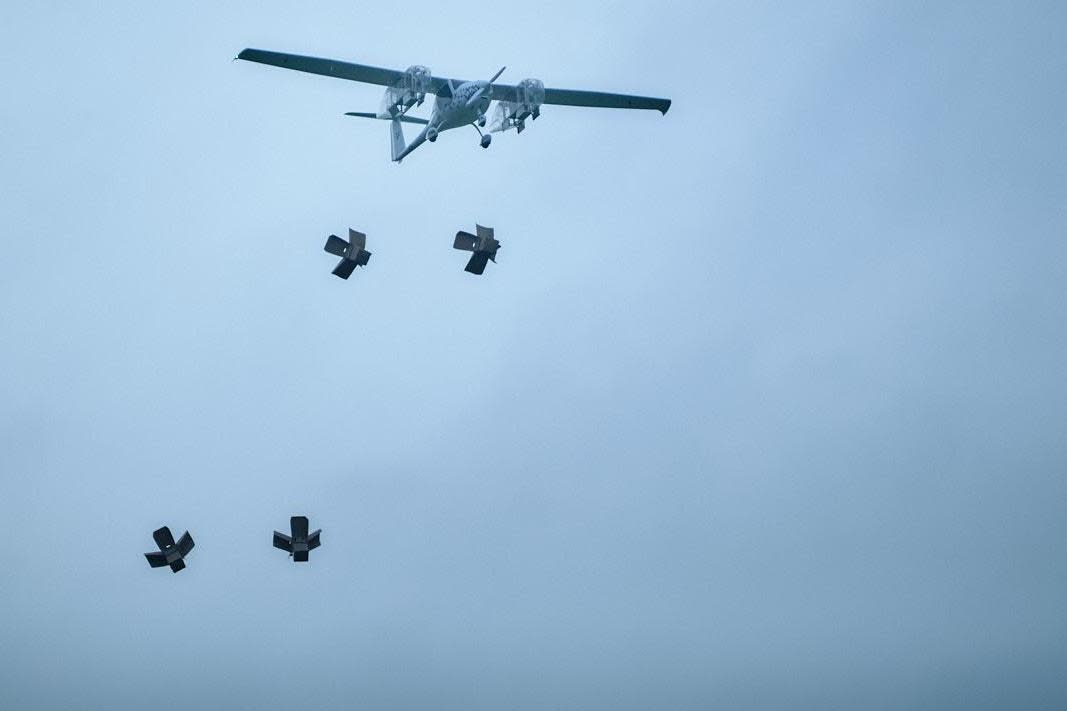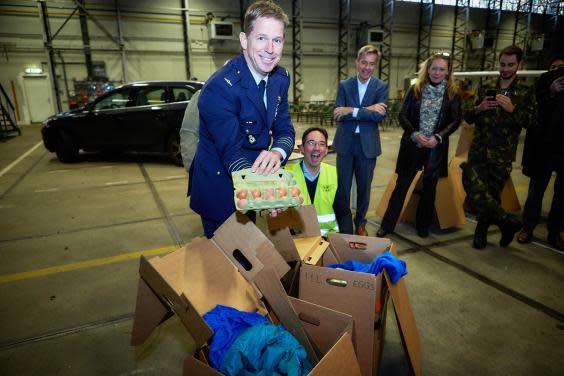Charity plans to airdrop aid using fleet of drones

Almost a year after 150,000 passengers at Gatwick airport had their travel plans wrecked by unauthorised drone activity, a Dutch organisation has successfully tested the technology for delivering aid.
Wings For Aid has just used a test aircraft to drop 18 boxes from a height of 100m, including two boxes containing raw eggs – all of which survived intact.
The test took place at an airbase in the Netherlands, as part of the charity’s development of the concept of providing essential aid to people cut off from terrestrial supplies.
“We were a little bit annoyed that military forces had access to drone technology while humanitarian actors hadn’t,” said Barry Koperberg, general manager of Wings For Aid.
His organisation plans to “bridge the last mile” to reach people beyond the reach of conventional aid logistics.
At the heart of the concept is a specially designed all-cardboard “delivery box” that can be dropped from a height of up to 500m without a parachute.
“We have developed a cargo drone with eight boxes of 20kg carrying humanitarian aid,” he said. The boxes can contain food, water, shelter kits or medical supplies.
“With pinpoint precision we can deliver it anywhere worldwide. Anyone worldwide will be in reach of such a system – we can deliver 20kg of humanitarian aid anywhere be it conflict, be it natural disaster.
“Think of Haiti, think of Somalia, think of the Nepal earthquake, where you are out of touch for a couple of days or a couple weeks.”

Wings For Aid, whose start-up has been co-funded by the Dutch government, calculates that while 100 million people involved in crises were provided with emergency supplies last year, an estimated 20 million in need did not.
In past humanitarian disasters, essential infrastructure has been destroyed by floods or earthquakes. In some parts of the world, those in need may be located deep inside conflict zones, beyond the reach of aid trucks.
While helicopters can sometimes be used, they are expensive and have limited capacity. In addition, pilots will not fly in areas where they believe they may be targeted.
Mr Koperberg said: “We hope launch our first aircraft, which is now being built, in 2020. Meanwhile we are testing the whole system.
“A very good application of modern technology, I think.”


